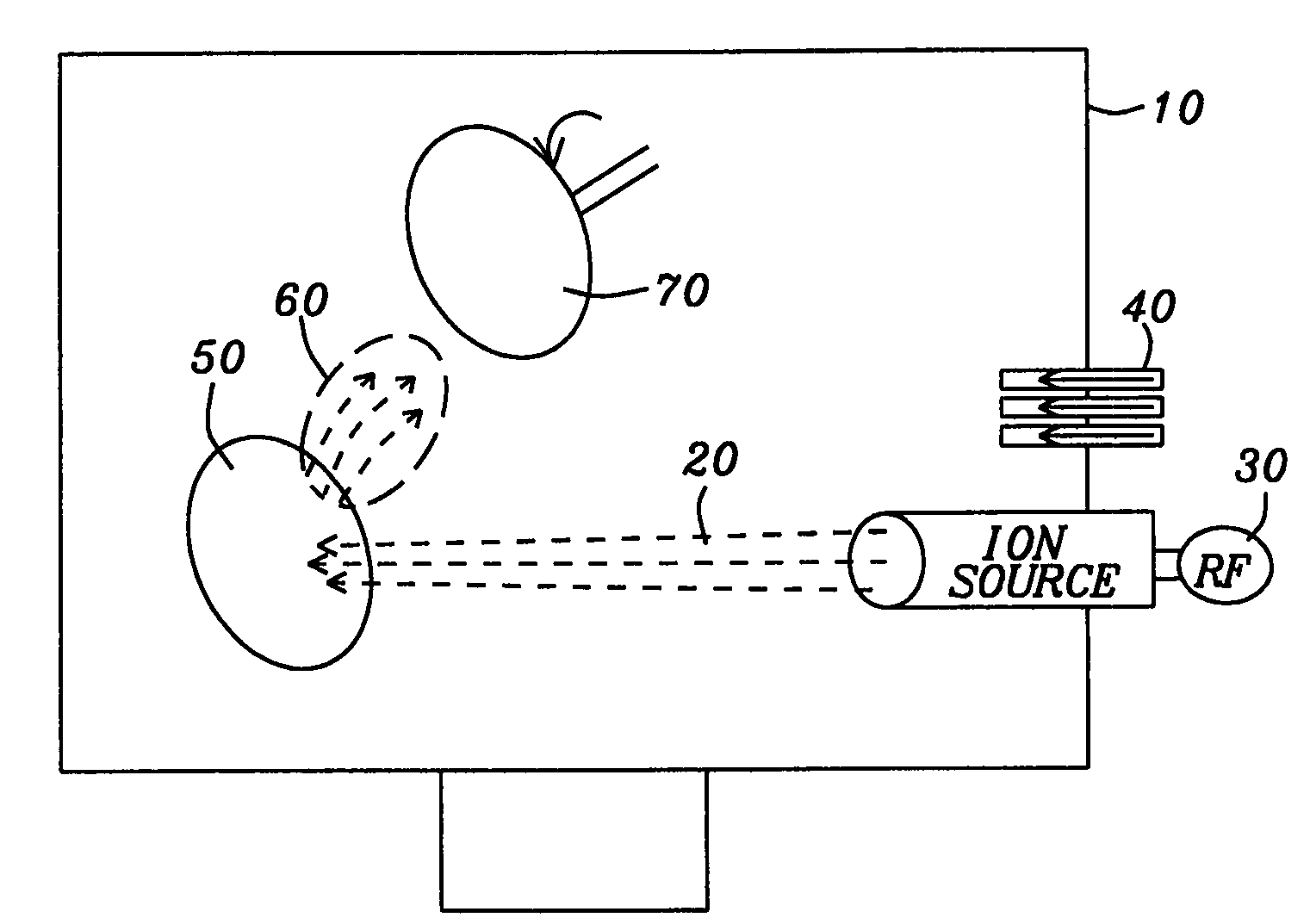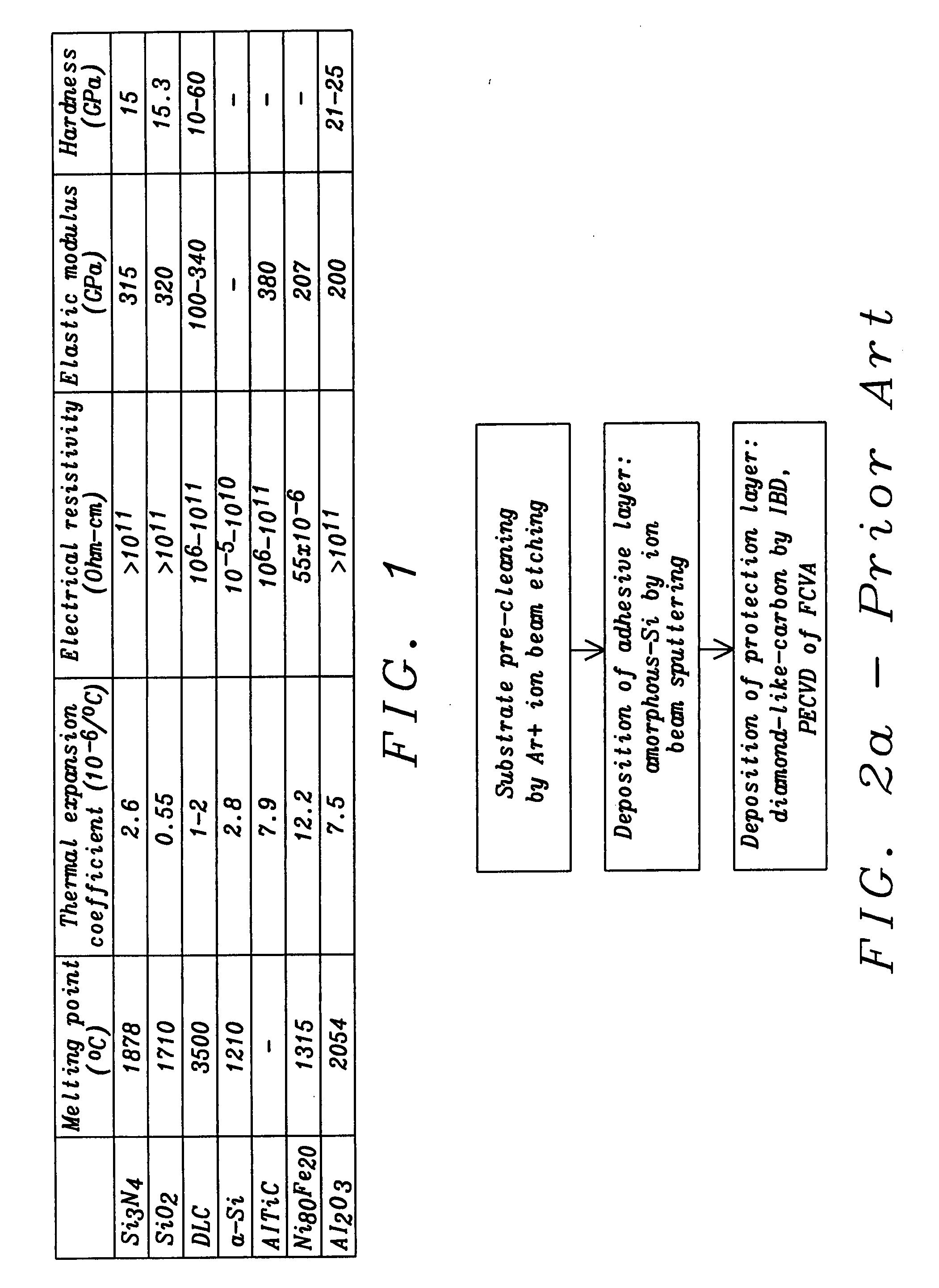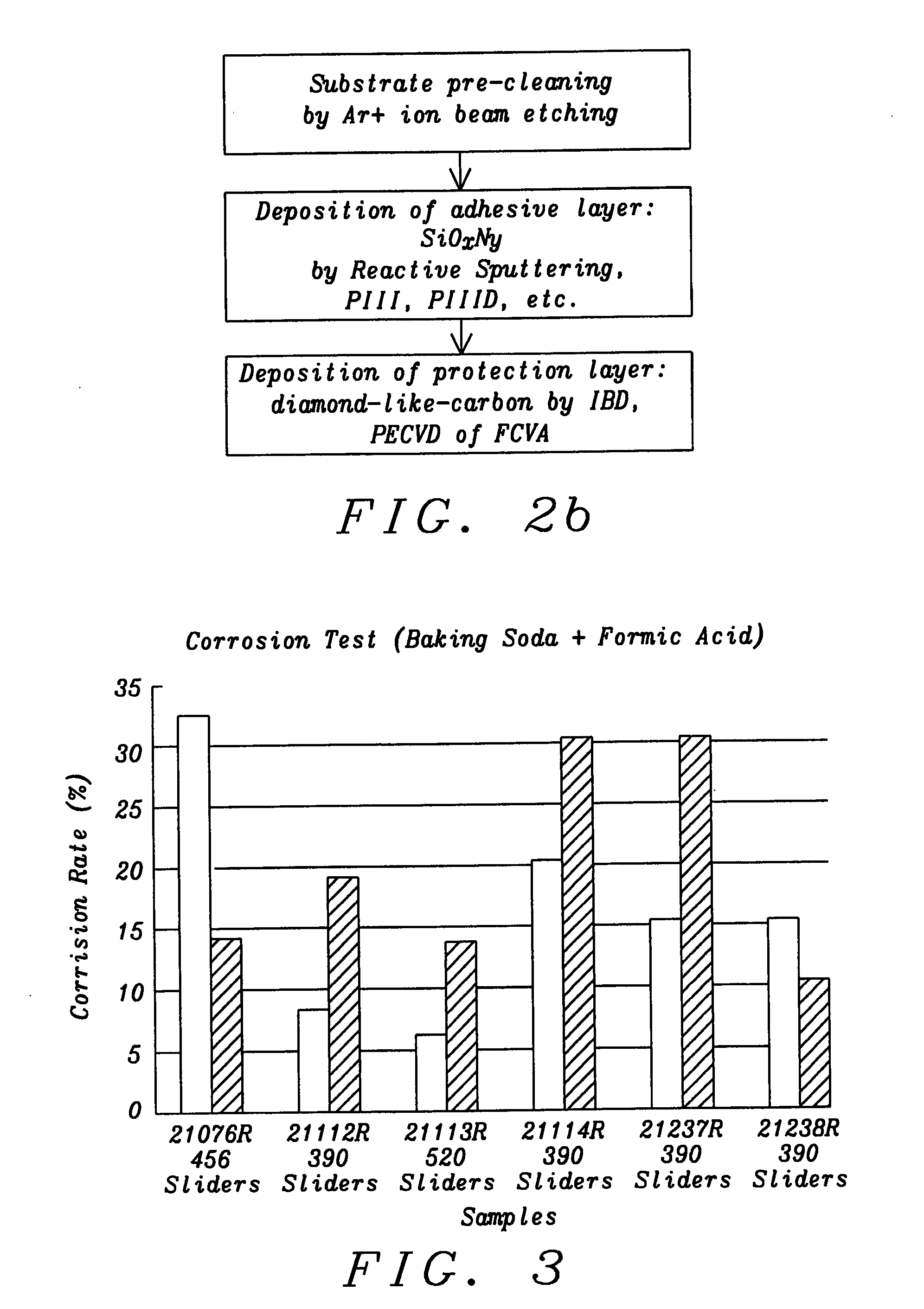Magnetic recording head and media overcoat
a magnetic recording and media overcoat technology, applied in the field of hard disk drive fabrication, can solve the problems of unavoidable contact between the disk surface and the head, damage to the head and the disk, loss of recorded information on the disk, etc., and achieves poor adhesion with the substrate materials of the head and other substrates
- Summary
- Abstract
- Description
- Claims
- Application Information
AI Technical Summary
Benefits of technology
Problems solved by technology
Method used
Image
Examples
first preferred embodiment
[0040]Referring now to FIG. 7, there is shown a schematic perspective drawing of an apparatus within which the protective bilayer of the present invention can be formed on a magnetic read / write head or recording medium.
[0041]The first preferred embodiment of this invention uses a deposition chamber (10) into which an ion beam, which in this embodiment is an Ar+ beam (20), is injected. The beam is produced by a RF source (30) and accelerated by voltages that range from 300 V to 1200 V. Injection ports (40) allow the injection of O2 and N2 gases into the chamber (10) with flow rates between 0 and 20 sccm, and different ratios, x / y, depending upon the desired form of the SiOxNy underlayer. The Ar+ beam is directed at a sputtering target of SiO2 (50) and the sputtered atoms (60) impinge on a rotatably mounted deposition target (70) that can be read / write heads, a plurality of which can be mounted as uncut sliders on a rotatable holder that can be rotated for uniformity of the deposition...
second preferred embodiment
[0042]In a second preferred embodiment, the apparatus of FIG. 8 is used as above, but the sputtering target material (50) is Si3N4. A ion beam, which in this embodiment is an Ar+ beam (20) is injected using voltages between 300 V and 1200 V and the O2 and N2 gases are injected into the chamber (10) with flow rates between 0 and 20 sccm, and different ratios, x / y, depending upon the desired form of the SiOxNy underlayer. The Ar+ beam is directed at a sputtering target of Si3N4 (50) and the sputtered Si and N atoms (60) impinge on the rotatably mounted deposition target (70) of read / write heads in the presence of the injected O2 and N2 gases to produce the desired SiOxNy underlayer. A plurality of the read / write heads are mounted as a plurality of uncut sliders on a rotatable holder for uniformity of the deposition. Alternatively, (70) can also be a magnetic recording medium such as a magnetic disk. Values of x between 0.02 and 2.0 and values of y between 0.01 and 1.5 have produced un...
third preferred embodiment
[0044]The third preferred embodiment of this invention uses the apparatus of FIG. 7, comprising a deposition chamber (10) into which an ion beam can be injected while injection ports (40) allow the injection of O2 and N2 gases with flow rates between 0 and 20 sccm, and different ratios, x / y, depending upon the desired form of the SiOxNy underlayer. In this embodiment, however, the ion beam is a high energy scanning, focused ion beam (20) that is directed at a sputtering target of Si (50) and the sputtered atoms (60) impinge on the rotatably mounted deposition target (70) of read / write heads that are mounted as uncut sliders on a rotatable holder for uniformity of the deposition. Alternatively, (70) can also be a magnetic recording medium such as a magnetic disk. To avoid poisoning the sputtering target and to eliminate hysteresis effects associated with the deposition, there is used a high energy scanning focused ion beam as described by T. Nyberg et al. (US Patent Application 2004 / ...
PUM
| Property | Measurement | Unit |
|---|---|---|
| thickness | aaaaa | aaaaa |
| thickness | aaaaa | aaaaa |
| voltage | aaaaa | aaaaa |
Abstract
Description
Claims
Application Information
 Login to View More
Login to View More - R&D
- Intellectual Property
- Life Sciences
- Materials
- Tech Scout
- Unparalleled Data Quality
- Higher Quality Content
- 60% Fewer Hallucinations
Browse by: Latest US Patents, China's latest patents, Technical Efficacy Thesaurus, Application Domain, Technology Topic, Popular Technical Reports.
© 2025 PatSnap. All rights reserved.Legal|Privacy policy|Modern Slavery Act Transparency Statement|Sitemap|About US| Contact US: help@patsnap.com



